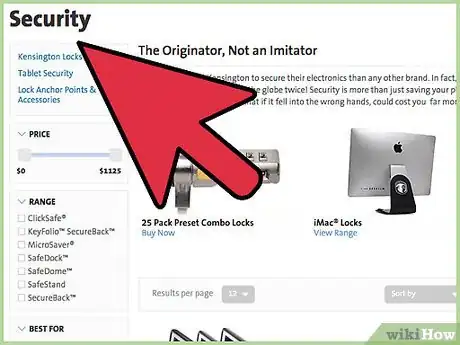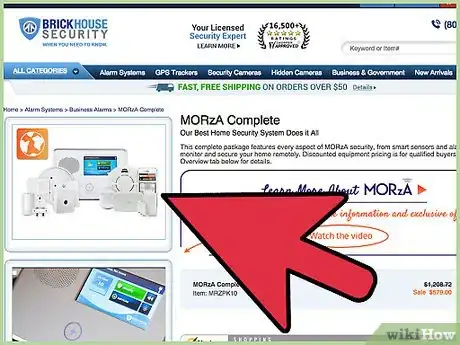wikiHow is a “wiki,” similar to Wikipedia, which means that many of our articles are co-written by multiple authors. To create this article, 12 people, some anonymous, worked to edit and improve it over time.
This article has been viewed 54,437 times.
Learn more...
Many individuals, companies, and small businesses often focus on maintaining the security of office computers from a virtual standpoint; however, sometimes physical instances of theft or burglary can occur in which your office computers are stolen. There are several ways to physically secure your office computers depending on your specific preference or office layout; including keeping computers locked in a secure room or even securing computers physically to desks using locks. Continue reading this article to learn about the many different ways in which you can keep your office computers physically secure.
Steps
Physical Computer Locks
-
1Obtain physical computer locks for all your office computers. Computer locks have the ability to keep laptop and desktop computers properly secured to desks.
- Speak with your office's information technology (IT) department to determine if they already have laptop or desktop locks available for use or if they are responsible for purchasing this equipment for the office.
- Purchase laptop or desktop locks from local retail stores that specialize in computers or electronics, or from similar retailers on the Internet. The "Lifehacker" website provided to you in the Sources section of this article contains links to various retailers that sell laptop and desktop locks.
-
2Secure your office computers to desks using computer locks. Most computers, if not all of them, contain universal slots in which you can fasten locks that keep each computer securely attached to a desk.
- Follow the instructions provided by the manufacturer of the laptop or desktop locks to physically secure the laptops or desktops in your office to desks.
Mobile Proximity Alarms
-
1Attach mobile proximity alarms to your office computers. Proximity alarms will alert you when equipment is removed outside of a specific radius.
- Verify that the appropriate radius is programmed into the alarm receivers. This will prevent false alarms from occurring when employees take laptops with them to meetings or to other sections of the office building.
-
2Store the receivers for every transmitter in a central office location. A central location will accurately track computers based on the radius programmed into the transmitter.
- Keep the receivers with your security staff if possible, since your security guards may be the best source for assistance in the event office computers are being stolen.
Office Building Protection
-
1Store office computers in an area with secure access. This may prevent unauthorized employees or visitors from stealing office computers and other equipment.
- Place the computers in a locked room at the end of the workday, or store the computers in an area that can only be accessed by authorized employees.
-
2Station security guards at entry points to the office building. This will help prevent unauthorized access to the office computers and equipment.
- Enforce a rule that requires all visitors to the office to remain in the lobby or to sign a visitor log that requires them to provide identification.
-
3Verify windows and doors are properly locked after office hours. This can help prevent theft or burglary from occurring.
- Work with a security firm or contractor to add security bars or security shutters to your windows and doors.
-
4Ensure that points of entry into the office building have sufficient lighting. Windows and doors that are brightly lit both indoors and outdoors will deter burglars from breaking and entering and stealing office equipment.
-
5Install an alarm system in the office. An alarm system can alert security and law enforcement authorities when triggered due to breaking and entering.































































